Search Images
Browse Content (p. 1731)
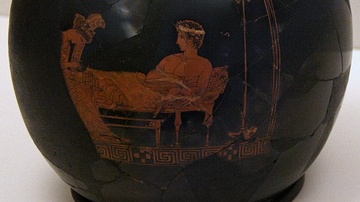
Image
Symposiast and Hetaira Playing a Harp
Red-figure chous. This symposium scene depicts a youthful symposiast reclining on a coach whilst a hetaira plays the harp. In was found in the Theatre of Dionysus, and is painted by the Eretria Painter, 425- 420 BCE. National Archaeological...
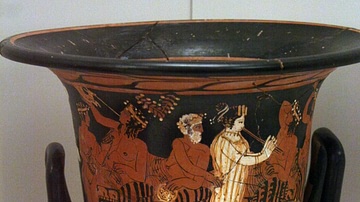
Image
Scene from a Symposium
Attic red-figure calyx krater.
Depicted here is a symposium scene, the male guests are reclining whilst the female aulos-player serenades them.
By the Uppsala Painter.
11559, National Archaeological Museum, Athens
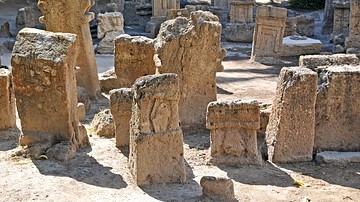
Image
Tophet of Carthage
A section of the cemetery of ancient Carthage (modern Tunisia). Used between c. 400 and 200 BCE, the grave stelae on the site were usually set up above an urn of cremated remains of the deceased.
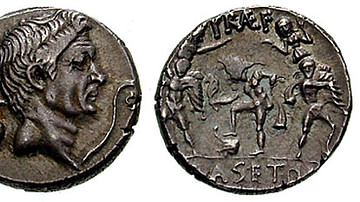
Image
Coin of Pompey the Great
A coin depicting Roman general and statesman Gnaeus Pompeius Magnus, Pompey the Great. The reverse side shows Neptune. (c. 40 BCE).

Image
Symposiast & Hetaira
A scene from the interior bowl of a red-figure kylix or stemmed drinking cup (490-480 BCE) depicting a symposiast and hetaira - high-class prostitute. (Museum of Fine Arts, Boston)

Image
A Drop of Water (Atman)
In The Upanishads, the connection between Atman and Brahman is spiritual. When moksha or liberation is achieved, Atman returns to the Brahman, to the source, like a drop of water returning to the ocean.
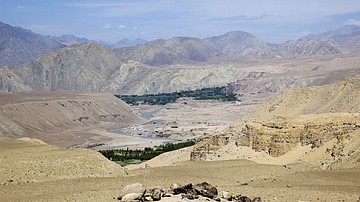
Image
Indus Valley
The Indus Valley, looking towards Nimmu.
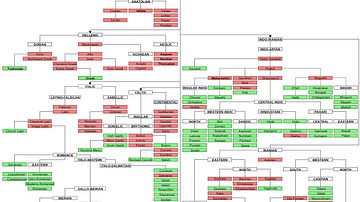
Image
Indo-European language family tree
Partial tree of Indo-European languages. Branches are in order of first attestation; those to the left are Centum, those to the right are Satem. Languages in red are extinct. White labels indicate categories / un-attested proto-languages...
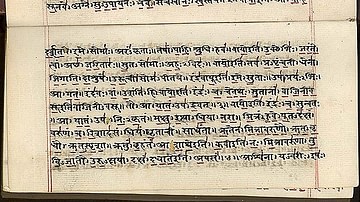
Image
The Vedas (Rig-veda)
An extract from The Vedas (or Rig-Veda) written in Sanskrit (early 19th century CE).

Image
Cicero
A 1st century CE bust of the Roman orator and statesman Cicero 106-43 BCE. (Capitoline Museum, Rome).